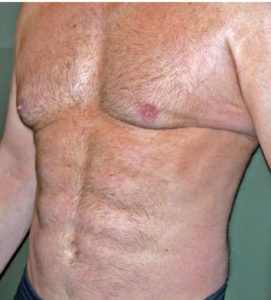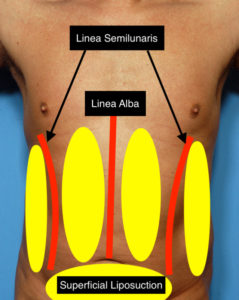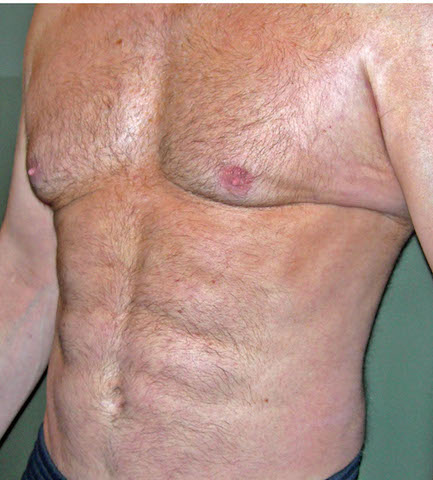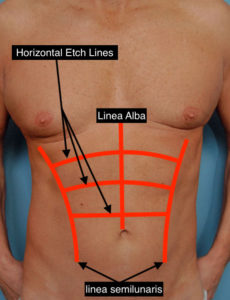The general approach used for liposuction is much like reducing a mountain to a less convex or flatter shape. The goal is to remove fat in a manner that results in a smooth outer surface across the area being treated with a shape consistent to the body area being treated. For most body areas this means the goal is to reduce the size of the convexity as few body surface look good relatively flat with the exception of the abdomen and back.


The patient population was diverse in ages (up to age 71), amount of fat removed and length of followup. They experienced no infections, seromas or any problems with skin healing. A small number of contour defects occurred (less than 1%) that were resolved with a revisional procedure. They point out that the periumbilical region is easy to overlook and can result in a ring of residual fat. (which is well known to also occur in any form of abdominal liposuction) They also mention that skin wrinkling can occur above the umbilicus and waviness below the umbilicus when skin laxity is not good.
Suffice it to say that 500 plus cases of any plastic surgery procedure is a significant clinical experience. The authors have provided valuable insights both technically but also in classifying two different types abdominal etching methods and candidates for it. Not every male can get six -pack abs and this is an important preoperative discussion. What its also relevant, like all liposuction surgery, is that the long-term result will only be maintained based on a stable postoperative weight. While in smoother contour liposuction surgery weight gain will just make the area bigger again. In abdominal etching, however, the consequences of weight gain will be more aesthetically adverse. At the least the definition of the result will be diminished. At worst an unusual appearance of an etched pattern on top of rounder abdomen will occur.
Dr. Barry Eppley
Indianapolis, Indiana




